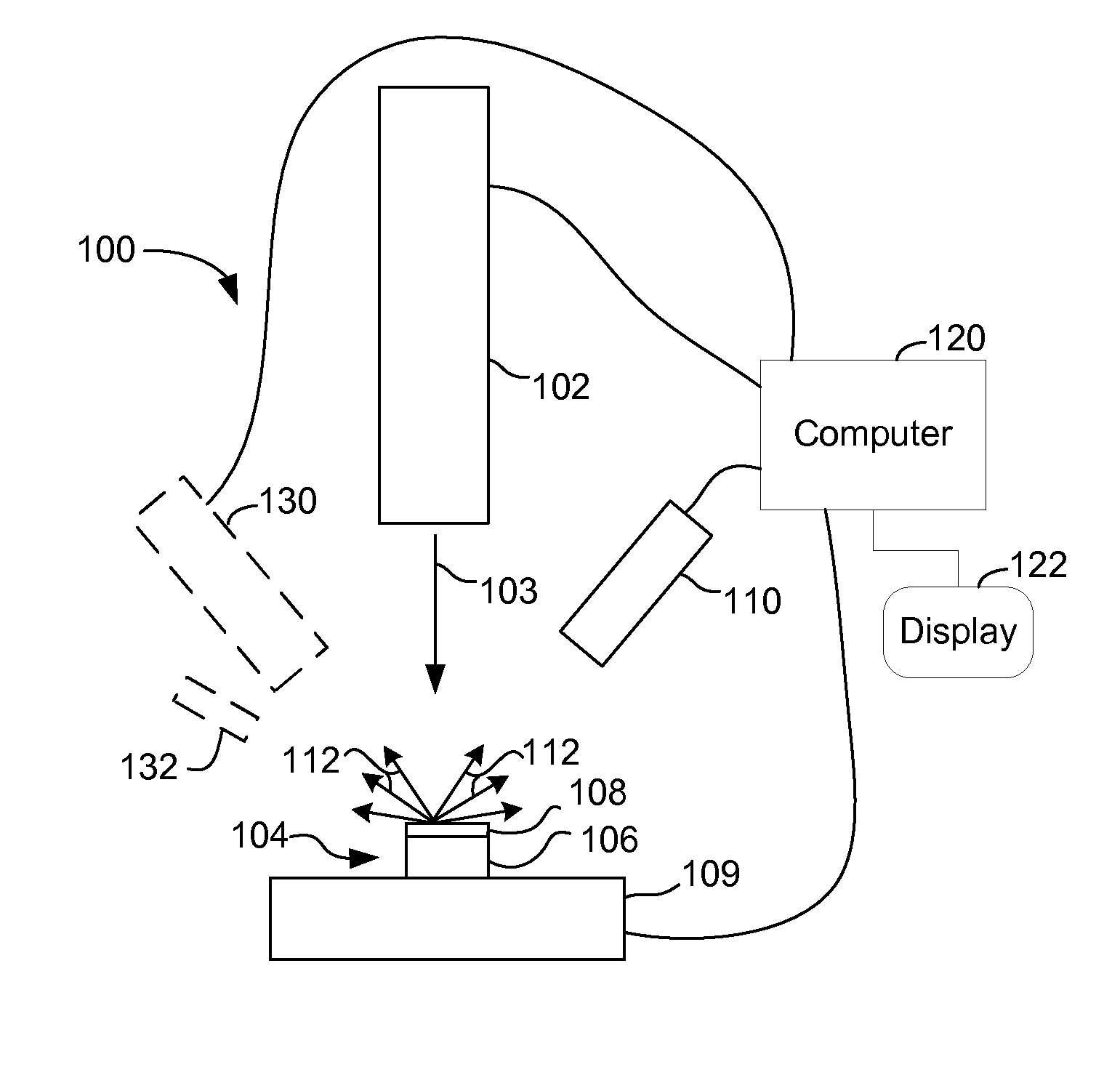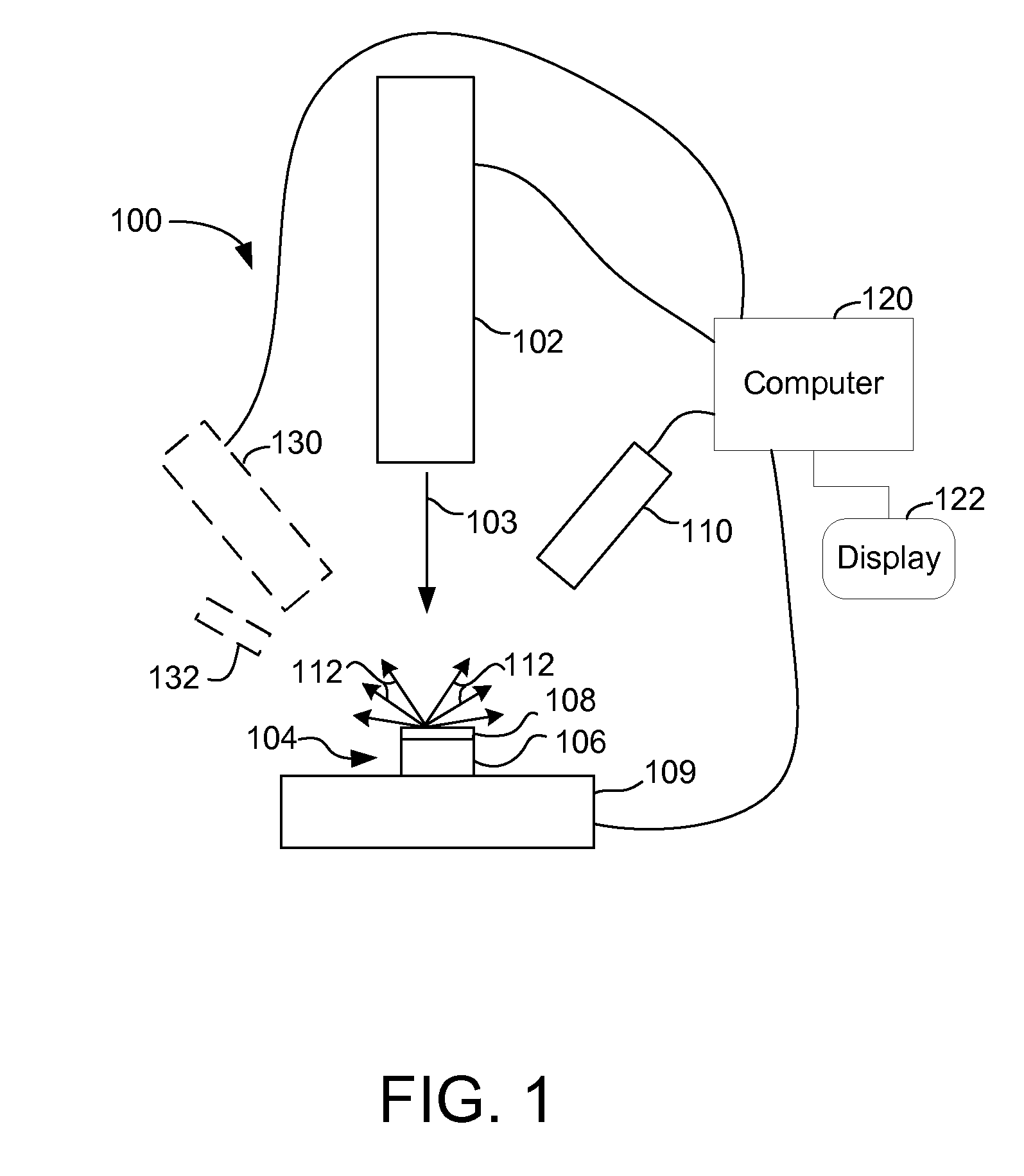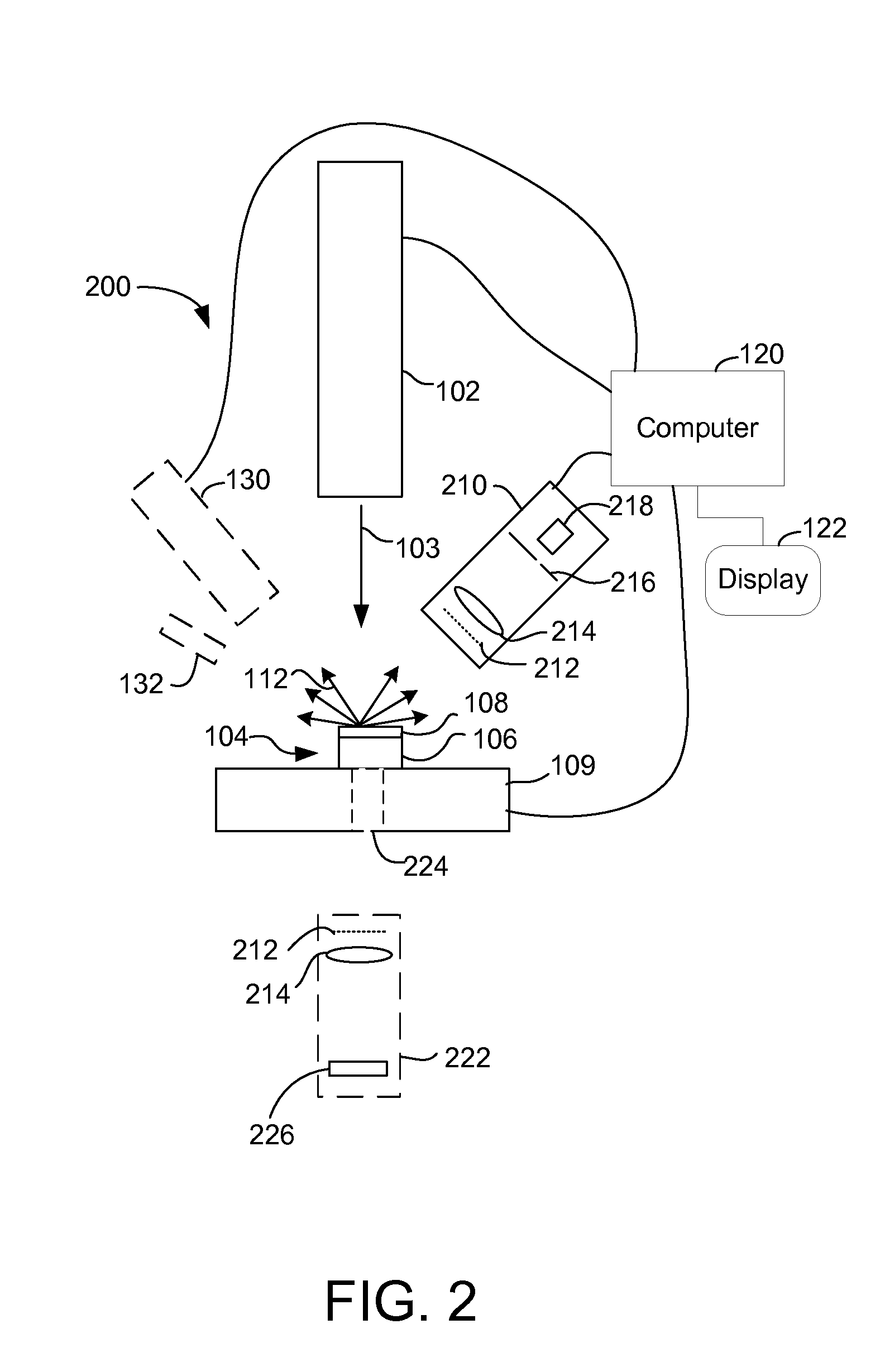Method And Apparatus For Laser Machining
a laser machining and laser technology, applied in laser beam welding apparatus, electron beam welding apparatus, manufacturing tools, etc., can solve the problems of limiting the resolution of the process, limiting the use of electron beams, and limiting materials for photochemical etching, so as to improve the control of laser processing and improve the micromachining
- Summary
- Abstract
- Description
- Claims
- Application Information
AI Technical Summary
Benefits of technology
Problems solved by technology
Method used
Image
Examples
Embodiment Construction
[0020]Various embodiments of the present invention employ various means to enhance laser processing. Embodiments of the invention could use any type of laser, now existing or to be developed, that supplies sufficient fluence. A preferred laser provides a short, that is, nanosecond to femtosecond, pulsed laser beam. Suitable lasers include, for example, a Ti:Sapphire oscillator, a fiber-based laser, or a ytterbium or chromium doped thin disk laser.
[0021]Ablation of a substrate by short, that is, nanosecond to femtosecond, laser pulses is accompanied by various emissions from the substrate. Embodiments of the present invention use the emissions from the substrate to determine the progress of the laser micromachining and to determine when a stage of processing is complete. The emission yields and energy spectra of the emitted particles are material-dependent. When a first material is being removed to expose a second material, the emissions will change at the material interface. A detec...
PUM
| Property | Measurement | Unit |
|---|---|---|
| pressure | aaaaa | aaaaa |
| pressure | aaaaa | aaaaa |
| pressure | aaaaa | aaaaa |
Abstract
Description
Claims
Application Information
 Login to View More
Login to View More - R&D
- Intellectual Property
- Life Sciences
- Materials
- Tech Scout
- Unparalleled Data Quality
- Higher Quality Content
- 60% Fewer Hallucinations
Browse by: Latest US Patents, China's latest patents, Technical Efficacy Thesaurus, Application Domain, Technology Topic, Popular Technical Reports.
© 2025 PatSnap. All rights reserved.Legal|Privacy policy|Modern Slavery Act Transparency Statement|Sitemap|About US| Contact US: help@patsnap.com



